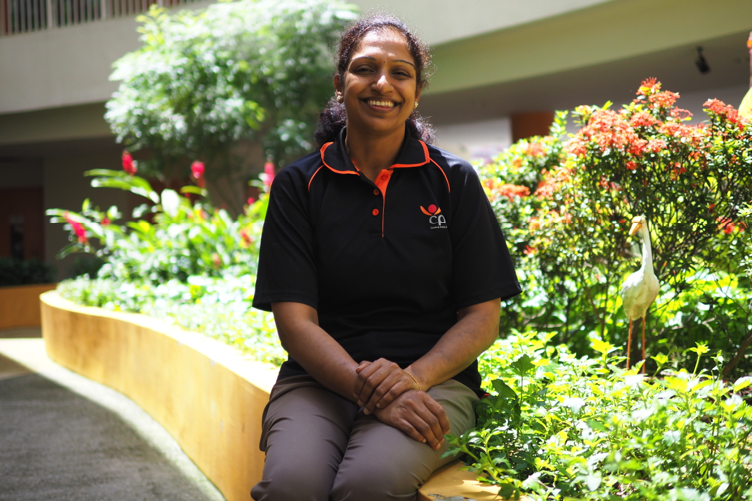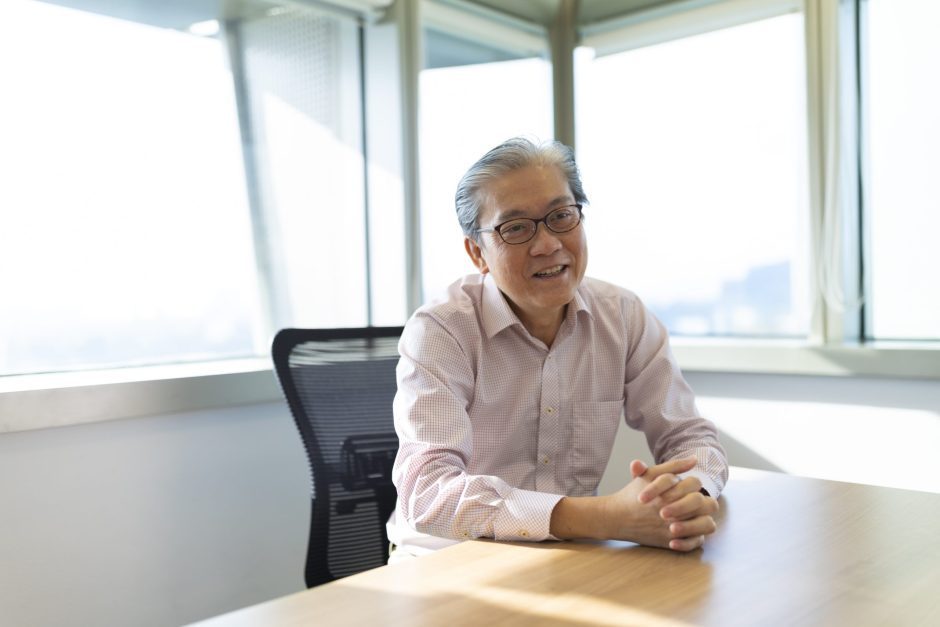Mealtimes used to be a stressful affair for Ethan* and his family. Born with multiple disabilities, including Global Developmental Delay1, he was unable to swallow food safely since young. At eight, he was still ‘eating’ with the help of a feeding tube.
After about three months of therapy and support at the Cerebral Palsy Alliance Singapore School (CPASS), where teachers and therapists worked with him to gradually desensitise his oral defensiveness – an aversion to sensations in and around the mouth – Ethan was able to transit to a puréed diet.
This was achieved through intensive therapy as well as using electrical stimuli to rehabilitate Ethan’s muscles.
“It may seem like a small thing, but for Ethan and his family, it was a big, positive milestone that made all the difference,” said Ms Sunitha Sendhilnathan, Head of Speech and Language Pathology at CPASS.
Now 11, Ethan is on a minced and moist diet comprising soft-textured foods, and uses the tube only for medication and certain liquids.
He is just one of the hundreds of children who have benefitted from the support provided by the school.
In addition to academic education, Special Education (SPED) schools, she added, offer various forms of support for families, such as therapy and teaching social and life skills.
“Children with SEN have varying abilities and diverse learning needs. What SPED schools do is to help them maximise their potential in an educational setting that is most appropriate to his or her needs,” she explained.
“At the end of the day, the goal is for them to pursue a productive and meaningful life in society.”
Supporting a wide spectrum of learning needs
SPED schools are more suited for children who require more intensive and specialised assistance. This could range from physical and educational to communicative support, including help in carrying out activities in daily living.
There are 19 Government-funded SPED schools run by 12 voluntary welfare organisations. They cater to distinct disability profiles of children with SEN. Most are for those aged seven to 18.
CPASS’ education programme and therapy services, for instance, are focused on helping children with cerebral palsy and multiple disabilities.
It offers specific therapies like physiotherapy, occupational therapy, speech and language therapy, hydrotherapy, music and movement, and art – all of which support children with their developmental and functional needs.
As a speech and language specialist, Sunitha has worked with non-verbal children who are unable to communicate with speech. She came up with a low-tech system for some of them that allows them to tap on buttons using their knees to say “yes” or “no” in response to questions, and even to form simple sentences that express their needs or wants.
It takes a village to raise a child
Sunitha believes that a child with SEN should be in school, unless medically unable to. This is because getting into a routine, for example, from morning assembly to lunchtime and classroom regimen – can be crucial in setting expectations for the child. Hence it is important for parents to instil good habits in their child to attend school. She has come across parents whose children have been admitted to a school, but they allow their children to stay at home instead because “they cannot wake up at 7.00 a.m.”.
CPASS, in recent years, has taken a different approach to learning and therapy for its students.
“The school has been moving towards what we call a trans-disciplinary team approach, where teachers, therapists and the parents work to integrate and infuse lesson and therapy objectives So we work as a team towards a common goal for the child,” shared Sunitha.
In the past, an occupational therapist would be the only person who oversees the child’s progress in a particular area. It would usually be done through a weekly one-on-one, 30-minute session.
Today, however, teachers incorporate lesson activities that require bilateral hand functions. This will be done through art and craft projects and physical education lessons.
A speech and language therapist like Sunitha also plays a part in working with the team to help the child to communicate using picture cards. This should be replicated at home too. Teachers help by giving parents access to the same support systems that are being used in school.
With the trans-disciplinary approach, goals set for children are embedded in their daily routine, which means the child is exposed to the maximum learning opportunity available. And for a child to maximise his or her potential, consistency and continuity are key.
*Name has been changed to protect the privacy of the individual and family
[1] Global Developmental Delay is defined as a significant delay in two or more developmental domains, such as language or motor skills.




.jpg)

